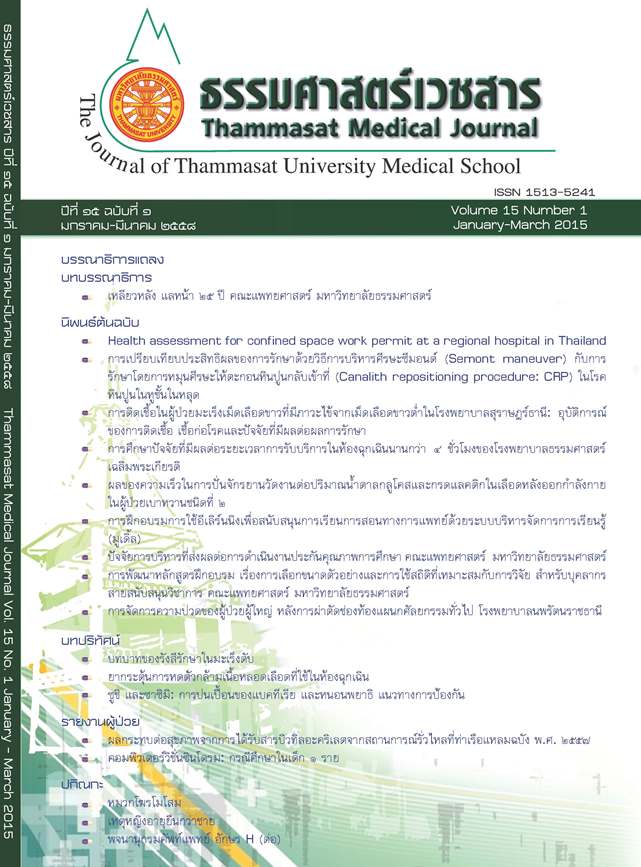The infection of febrile neutropenia in leukemia at Suratthani hospital: incidence of infection, causative organism and factors associated with treatment outcomes
Keywords:
Leukemia, Adults, Febrile neutropenia, AntibioticAbstract
Introduction: Febrile neutropenia (FN) is a common complication found in leukemic patients after chemotherapy. Due to patients, lowered immunity, FN not only increases the risk of infection, but also leads to a prolonged hospital stay and high morbidity and mortality rates. This study explored the etiology and epidemiology of FN, along with factors associated with the treatment outcomes, clinical improvement or death, of the patients at Suratthani hospital.
Method: We retrospectively reviewed the medical records of post-chemotherapy leukemic patients aged 15 years old and over with a diagnosis of FN who were hospitalized at Suratthani hospital from 1 January 2011 to 31 May 2013. Data on patients, demographic characteristics, medical history, laboratory testing results, treatment, and clinical response were collected and analyzed using a Chi-square test, with a significance level of 0.05.
Result: A total number of 204 hospital admission episodes in 113 patients were identified. The mean age of samples was 46.7 years old, with 54.4% being male. Acute myeloid leukemia was found to be the most common leukemia (76%). The hospital stay ranged from 1 to 51 days, with a median of 17 days. The hospital mortality rate was 19.1%. The most common cause of FN was bacterial infection (93.8%), with 81.4% being gram-negative; Klebsiella pneumoniae, Pseudomonas spp., Acinetobacter spp., and Escherichia coli were the most frequently found organisms. The most frequently used antibiotics were Ceftazidime plus Amikacin, with a clinical response rate of 43.8%. Factors associated with the hospital mortality of the patients included clinical unresponsiveness to empirical antimicrobial therapy, positive organism finding from specimen culture results, and empirical antibiotic resistance.
Discussion and Conclusion: The response of causative pathogens to empirical antimicrobial therapy in post-chemotherapy patients with FN is crucial in predicting the hospital mortality at Suratthani hospital. Future research is recommended to further assess trends in antibiotic resistance, with clinical applications.
Key words: Leukemia, Adults, Febrile neutropenia, Antibiotic


